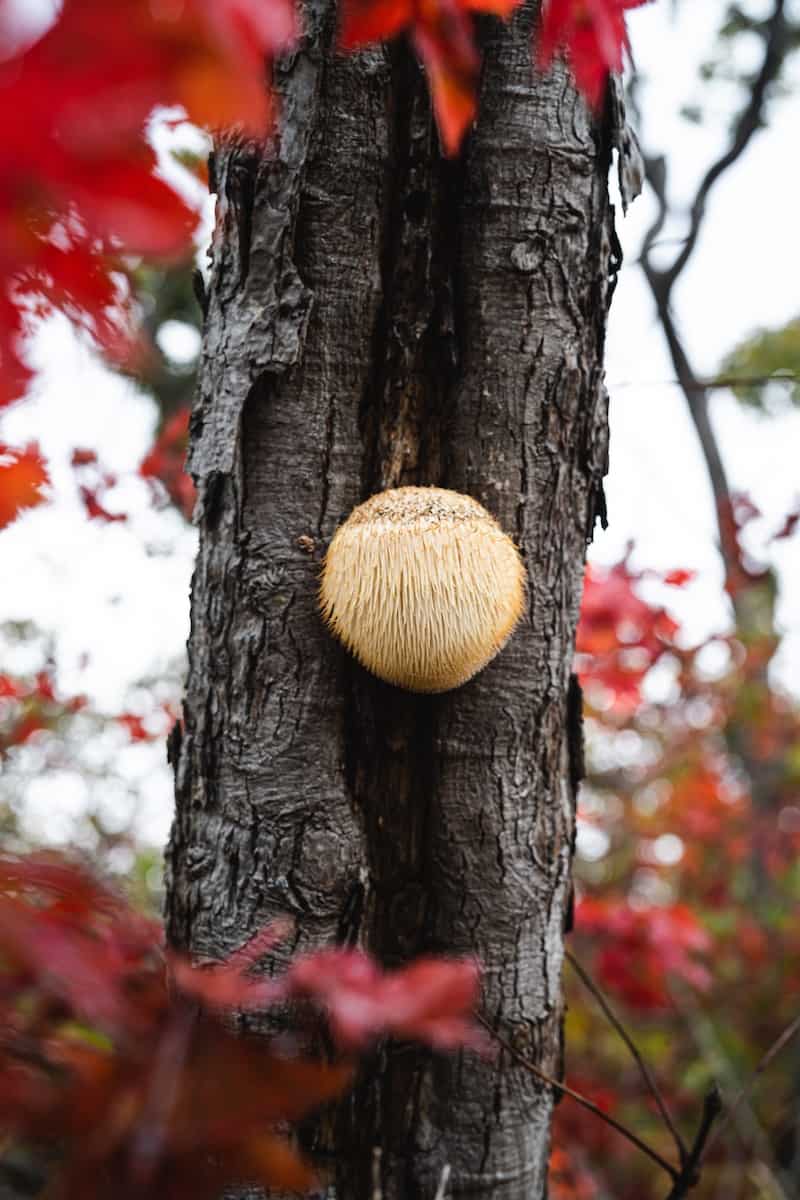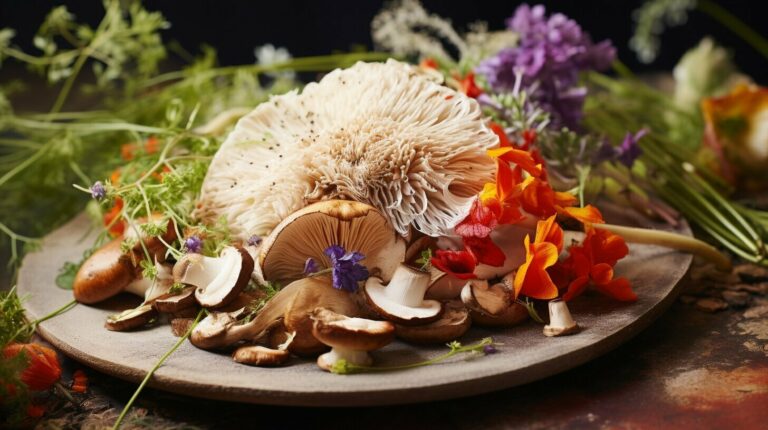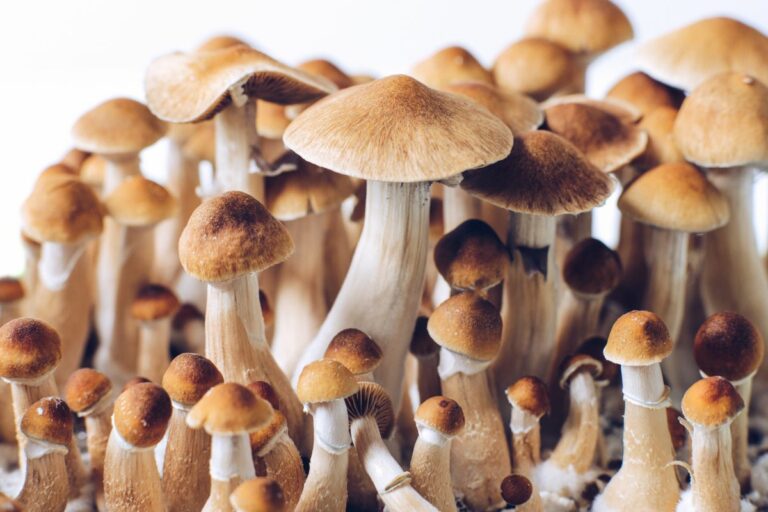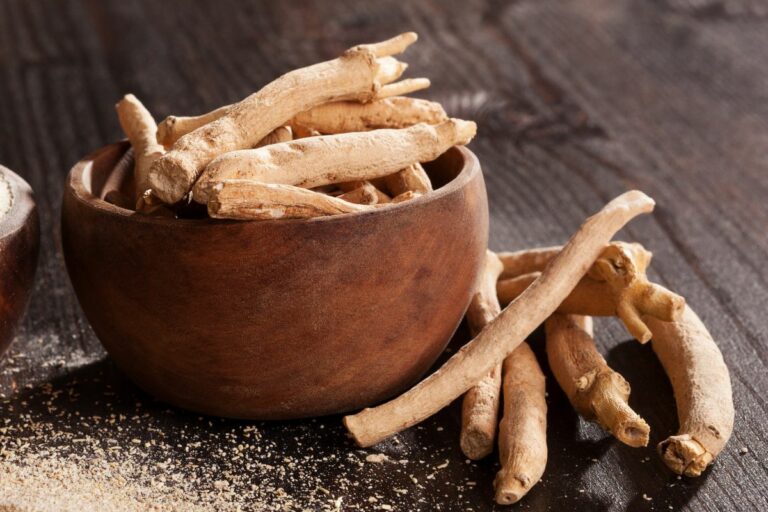Mushroom microdosing has gained significant attention in recent years due to anecdotal reports of enhanced creativity, mood, and focus. Microdosing involves consuming a small, sub-perceptual amount of psychedelic substances like psilocybin-containing mushrooms, with the aim of experiencing potential benefits without the intense hallucinogenic effects often associated with higher doses. Determining the appropriate microdose amount is crucial for achieving the desired effects while minimizing the risk of adverse reactions.
Psilocybin mushrooms come in various strains, each containing different levels of psychoactive compounds like psilocybin and psilocin. As a result, the specific microdose amount can vary depending on the strain and individual factors. Researchers have conducted studies like a double-blind placebo-controlled study to better understand the effects, appropriate dosages, and potential benefits of microdosing with psilocybin mushrooms. These studies help provide a foundation for those seeking guidance on microdosing practices.
In response to the growing interest in microdosing, more resources and guides are emerging to help individuals navigate the process. However, it is essential to consult professional advice when engaging in microdosing practices and to remain cautious of legal regulations surrounding the use of psychedelic substances.
Exploring Microdosing
Table of Contents
Microdosing is the practice of consuming small, sub-perceptual amounts of psychedelic substances, usually around 1/10th to 1/20th of a recreational dose. This practice has gained significant attention in both the press and popular culture in recent years.
The mainstream media has reported on the potential benefits of microdosing, such as increased creativity, improved mood, and enhanced cognitive function. These anecdotal claims have spurred a growing interest in exploring the effects of microdosing on well-being and productivity.
Psilocybin-containing mushrooms, also referred to as “magic mushrooms,” are among the most commonly used substances for microdosing. The typical microdose of mushrooms can vary, but it usually falls within the range of 0.1 to 0.5 grams of dried material. It is important to note that individual differences in metabolism and sensitivity can impact the optimal microdose amount for each person.
Despite the increasing popularity of microdosing in popular culture, the scientific evidence supporting its effects is still limited. Most knowledge about microdosing comes from anecdotal reports and preliminary research. More rigorous scientific studies are needed to provide a thorough understanding of the practice’s safety and potential benefits.
Caution should be exercised when exploring microdosing, as possession and distribution of psychedelic substances, such as psilocybin mushrooms, are illegal in many countries. While more jurisdictions are starting to reconsider their policies on psychedelics, it is crucial to adhere to local laws and regulations.
In conclusion, microdosing has gained traction in both the press and popular culture, with stories of potential benefits and positive experiences. However, the current evidence supporting the effects of microdosing is mainly anecdotal and preliminary. As interest in this practice continues to grow, it is essential that future research comprehensively investigates the safety, effectiveness, and potential applications of microdosing.
Mechanism of Microdosing Psilocybin
Psilocybin is a naturally occurring psychedelic substance found in certain species of mushrooms. It has recently gained popularity for its potential therapeutic benefits when used at small doses, a practice known as microdosing. In this section, we will explore the mechanisms behind microdosing psilocybin and its effects on the brain.
Psilocybin’s primary action in the brain is its ability to bind to serotonin receptors, specifically the 5-HT2A receptor subtype1. Serotonin is a neurotransmitter that plays a crucial role in mood regulation, cognitive function, and overall mental well-being. By interacting with these receptors, psilocybin can modulate serotonin signaling and potentially alleviate symptoms of anxiety, depression, and other mental health disorders.
Microdosing psilocybin is thought to have more subtle and nuanced effects on the brain compared to larger, more intense doses. At microdose levels, psilocybin may still interact with serotonin receptors, but likely to a lesser extent than during a full-blown psychedelic experience. This allows for subtle changes in mood and cognition without causing the intense perceptual alterations or potential side effects associated with higher doses2.
Neuroplasticity, the brain’s ability to form new connections and adapt to new experiences, may also play a role in the potential benefits of microdosing psilocybin3. By promoting neuroplasticity, microdosing could potentially help facilitate learning, memory, and problem-solving, as well as promote emotional flexibility and resilience.
To sum up, the mechanism of microdosing psilocybin primarily involves its interaction with serotonin receptors in the brain, with potential enhancements in neuroplasticity as a secondary effect. Through these actions, microdosing psilocybin may contribute to improved mood, cognitive function, and overall mental well-being4.
Mushroom Species and Potency
Mushroom microdosing is the practice of consuming a small, sub-perceptual amount of psychedelic mushrooms, such as psilocybe cubensis or psilocybe semilanceata, to experience potential benefits in areas like mental health, creativity, and productivity. To fully understand and ensure consistency when microdosing, it is essential to consider the species and potency of the mushrooms used.
Regarding species, psilocybe cubensis is one of the most common choices for microdosing because it is widely available and easy to grow. It is moderately potent, with about 0.63% psilocybin and 0.6% psilocin content. Other species, such as panaeolus cyanescens, also known as “Blue Meanies,” have higher levels of potency. Panaeolus cyanescens contain around 0.85% psilocybin and 0.36% psilocin, making them one of the most potent magic mushroom species.
Psilocybe semilanceata, commonly known as “liberty caps,” is another popular species for microdosing due to its relatively high potency compared to other mushrooms with similar levels of psilocybin. It contains about 0.98% psilocybin and 0.02% psilocin. Comparing these three popular species, panaeolus cyanescens is the most potent, followed by psilocybe semilanceata and then psilocybe cubensis.
Potency levels can guide users in choosing the right species and determining their microdose amount. A general starting point for microdosing is about 0.1 to 0.3 grams of dried mushrooms, but adjustments should be made considering the species’ potency. The goal is to experience the benefits without having a full-blown psychedelic trip.
In conclusion, understanding the different mushroom species and their potency levels is crucial for a successful and consistent microdosing experience. Users should carefully choose the right species based on their potency preferences and adjust the microdose amount accordingly.
Determining the Microdose Amount
Determining the appropriate microdose amount of mushrooms largely depends on factors such as individual tolerance, body weight, and the potency of the specific mushroom strain. Although there is no one-size-fits-all answer, the general guideline for a microdose ranges from 0.1 to 0.5 grams of dried psilocybin-containing mushrooms.
When starting out with microdosing, it is essential to begin with a low dose and slowly increase the amount to find the optimal level that provides the desired effects without causing noticeable psychedelic experiences. Typically, individuals start with 0.1 grams and adjust upward based on personal preference and individual differences in sensitivity.
It is crucial to take into account one’s body weight when determining the microdose amount. A higher body weight may require a slightly larger dose to achieve the desired effects. However, it is important not to exceed the recommended range of 0.1 to 0.5 grams and always approach microdosing with a cautious mindset.
Considering the variability in potency between different mushroom strains, it is essential to research and understand the specific strain being used for microdosing. Some strains, such as Psilocybe cubensis or Psilocybe mexicana, may have different levels of psilocybin content, which can influence the microdose amount. Therefore, being knowledgeable about the chosen mushroom strain is necessary for determining an accurate microdose.
In conclusion, determining the ideal mushroom microdose amount calls for a combination of personal assessment, careful research, and attention to individual factors, such as body weight and mushroom strain. By adhering to the recommended guidelines and gradually adjusting the dose, individuals can successfully navigate the microdosing process to experience potential benefits without having intense psychedelic experiences.
Microdosing and Mental Health
Microdosing with substances such as psilocybin mushrooms has recently gained attention as a potential alternative treatment for various mental health issues. These substances have been suggested to help alleviate symptoms of depression, anxiety, stress, PTSD, and even bipolar disorder.
A double-blind placebo-controlled study of psilocybin mushrooms microdosing showed that this method could have therapeutic value for the treatment of mental health disorders. Research suggests that psilocybin microdosers demonstrate greater observed improvements in mood and mental health at one month relative to non-microdosing controls. It is important to note, however, that further research is necessary before solid conclusions can be drawn.
Although microdosing with substances like psilocybin mushrooms and LSD is still in the early stages of research, there have been some promising findings. For example, adults who microdose psychedelics reported health-related motivations and exhibited lower levels of anxiety and depression compared to non-microdosers.
The expectations of individuals starting to microdose could also play a role in the potential benefits they may experience. A study found that positive expectations could predict improved mental health outcomes linked to psychedelic microdosing. It is crucial to consider the potential impact of the placebo effect in this context, and further research is needed to establish the extent to which actual benefits are derived from microdosing.
While microdosing with psychedelics appears to show potential for improving certain aspects of mental health, it is important to approach this topic with caution and skepticism. The long-term effects of microdosing remain unknown, and self-medicating with substances such as psilocybin mushrooms may not be suitable for individuals with pre-existing mental health conditions.
In summary, microdosing with substances like psilocybin mushrooms presents a promising area for future research on addressing mental health disorders including depression, anxiety, stress, PTSD, and bipolar disorder. As interest in this subject grows, further studies will seek to understand the mechanisms behind the observed benefits and the risks associated with microdosing for mental health improvement.
Effects on Mood and Emotion
Mushroom microdosing has gained popularity as a means to experience the potential benefits of psilocybin without the intense psychedelic effects typically associated with consuming larger doses. In this section, we will explore the effects of mushroom microdosing on mood and emotion.
Research indicates that microdosing with psilocybin mushrooms can lead to noticeable improvements in mood and emotional cognition. A double-blind placebo-controlled study found that participants experienced mood enhancement and better emotional processing compared to those who took a placebo. These improvements may be attributed to the activation of serotonin receptors by the psilocybin, a compound found in hallucinogenic mushrooms.
An interview study on psychedelic microdosing also supports these findings. Participants reported experiencing elevated mood, better emotional awareness, and improved mental health. Some even mentioned feeling euphoria during their microdosing experiences. The enhanced connection with emotions might promote better overall well-being and help individuals manage emotional challenges more efficiently.
However, it is important to note that some individuals may experience heightened emotional sensitivity while microdosing. A subreddit analysis found that a smaller number of posters reported feeling very emotional on microdosing days. This suggests that reaction to mushroom microdoses may vary from person to person, and not everyone will experience the same emotional outcomes.
In conclusion, microdosing with psilocybin mushrooms seems to have a positive impact on mood and emotional well-being for many individuals. The improved emotional cognition, mood enhancements, and feelings of euphoria reported by users showcase the potential benefits that can come from this practice. However, it is crucial to consider that individual experiences may vary and that further research is needed to fully understand the potential of mushroom microdosing for emotional health.
Therapeutic Effects of Microdosing
Microdosing with mushrooms, specifically those containing the psychedelic compound psilocybin, has gained popularity in recent years as a potential method for improving cognitive function and providing therapeutic benefits. Microdosing involves consuming small amounts of psychedelics, typically around 1/10th to 1/20th of a recreational dose, allowing users to experience the benefits without the intense hallucinogenic effects.
One of the main benefits reported by individuals who microdose is an increase in focus and attention. In a published interview study of psychedelic microdosing, participants reported positive effects, including enhanced concentration and creativity. This suggests that microdosing psilocybin mushrooms may be helpful for individuals dealing with ADHD or other attention-related disorders.
Another area of interest is the potential for microdosing to enhance neurogenesis, or the growth and formation of new neurons in the brain. Some studies indicate that the use of psilocybin in microdoses might stimulate the growth of new brain cells, thereby improving cognitive function and overall brain health. A study in Nature demonstrated that adults who microdose psychedelics report lower levels of anxiety and depression compared to non-microdosers, pointing towards possible therapeutic effects on mental health.
Pain management is another potential application of microdosing mushrooms. While research is limited, anecdotal evidence suggests that individuals who microdose report a decrease in chronic pain symptoms. This could be attributed to the potential anti-inflammatory and analgesic properties of certain mushroom compounds.
In conclusion, microdosing with psilocybin mushrooms offers promising therapeutic effects in areas such as cognitive function, mental health, and pain management, though additional research is warranted to better understand the mechanism and potential long-term benefits. By adhering to responsible dosing practices, individuals seeking treatment for various conditions might harness the potential of microdosing to improve their overall well-being.
Microdosing and Cognitive Flexibility
Microdosing, which typically involves consuming a minimal amount of a psychedelic substance such as psilocybin mushrooms, has gained momentum in recent years. One area of interest is its potential impact on cognitive flexibility. Cognitive flexibility refers to the ability to switch between different tasks or thought patterns effectively and is crucial for learning and problem-solving.
A study on microdosing with psilocybin mushrooms suggested that it could promote cognitive flexibility, positively affect empathy, and have therapeutic value. In another study that explored the effect of microdosing psychedelics on creativity, it was found that consuming a microdose of truffles led to improved creative thinking and cognitive flexibility. This improvement in cognitive flexibility is possibly due to the activation of serotonin 2A receptors, which can be crucial for creative thinking.
Divergent thinking, a type of creative thinking that involves generating multiple solutions to a problem, has also been linked to microdosing. A study on microdosing with psilocybin mushrooms and brain activity showed that the practice could enhance divergent thinking performance and other relevant cognitive aspects such as flow.
However, another study found that microdosing psychedelics had no significant impact on cognitive function in naturalistic settings. This suggests that more research is necessary to understand the full extent of the relationship between cognitive flexibility and microdosing.
In summary, microdosing with psilocybin mushrooms and other psychedelics has been linked to improvements in cognitive flexibility, learning, and divergent thinking performance in some studies. However, more research is needed to establish a clear connection and to determine the optimal dosage and conditions for the apparent benefits.
Risks and Side Effects
Mushroom microdose amounts typically range from 0.1g to 0.5g of dried mushrooms. As with any substance, there are potential risks and side effects that can occur while microdosing mushrooms. It is important to be aware of these concerns and to use caution when experimenting with microdosing.
One of the primary risks associated with microdosing mushrooms is the possibility of developing a tolerance. Consistent use of these substances could lead to a diminished response over time. In order to minimize this risk, it is recommended to follow a dosing schedule, such as one day on and two days off, to give the body time to reset.
Hallucinations are unlikely to occur at microdose levels; however, individuals who are particularly sensitive to the effects of psychedelics might experience mild visuals or perceptual changes. If hallucinations occur, it is crucial to reduce the microdose amount to maintain the intended sub-perceptual level.
Abuse and dependency are not commonly associated with psychedelic microdosing, though everyone’s experience and susceptibility to addiction may differ. It is essential to maintain a responsible microdosing schedule and practice self-awareness to avoid potential issues.
In some cases, microdosing mushrooms can produce toxic effects, leading to uncomfortable physical symptoms such as nausea, headache, or dizziness. If these symptoms persist, it might be necessary to discontinue use or consult with a medical professional.
Psychological side effects are also a concern, with some individuals reporting increased anxiety, paranoia, or mood swings while microdosing. It is essential to monitor one’s mental health during the microdosing process and make adjustments as needed.
In summary, microdosing mushrooms carries potential risks and side effects that users should be cautious of. By following a responsible dosing schedule, monitoring personal mental and physical health, and adjusting the microdose amount as needed, it is possible to minimize these risks and experience the benefits of microdosing mushrooms.
Noted Figures and Their Contributions
James Fadiman is a pioneering researcher in the field of psychedelic microdosing. He has been conducting studies on the effects of psychedelics, such as LSD and psilocybin mushrooms, since the 1960s. In 2011, Fadiman published the groundbreaking work, The Psychedelic Explorer’s Guide, which aims to provide readers with practical advice and scientific insights on safe and effective use of psychedelic substances. The guide includes protocols for microdosing based on Fadiman’s expertise and experience. His work has greatly influenced the conversation around psychedelic microdosing, contributing to its growing acceptance as a method for improving mental health, creativity, and overall well-being.
Another influential figure in the microdosing movement is Ayelet Waldman, a renowned author and essayist. In her memoir, A Really Good Day: How Microdosing Made a Mega Difference in My Mood, My Marriage, and My Life, Waldman chronicles her personal journey into microdosing with LSD. She shares her experiences with microdosing, which helped to alleviate her symptoms of mood disorders, enhanced her creativity, and improved her relationships. Due in part to the candid and accessible nature of her writing, Waldman’s account has played a significant role in bringing the topic of microdosing further into the public awareness.
Researchers like Dr. James Fadiman have not only contributed to the popularization of microdosing, but also laid the foundation for ongoing scientific investigation. Several recent studies, including a double-blind placebo-controlled study on microdosing with psilocybin mushrooms, and another investigating the observed improvements in mood and mental health among psilocybin microdosers, build upon the work of pioneers such as Fadiman.
In summary, figures such as James Fadiman, Ayelet Waldman, and Dr. James Fadiman have made substantial contributions to the understanding and acceptance of psychedelic microdosing. Their experiences, research, and writings have provided valuable insights into the potential benefits of microdosing with substances like psilocybin mushrooms and LSD, while inspiring further scientific inquiry.
Legal Framework and Social Attitude
In recent years, there has been a growing interest in the potential benefits of microdosing psychedelics, particularly psilocybin mushrooms. As a result, the legal framework surrounding these substances has started to evolve. Several countries and jurisdictions are moving toward legalization and decriminalization of psilocybin mushrooms, opening up opportunities for research and therapeutic use.
In some regions, such as certain cities and states in the United States, the decriminalization of psilocybin mushrooms has already taken place. This approach aims to reduce penalties for the possession and distribution of small amounts of the substance, with a focus on treatment rather than punishment. This shift in legal perspective can be attributed to the growing body of evidence highlighting the potential therapeutic benefits of microdosing psychedelics in treating various mental health conditions.
Community attitudes towards microdosing also play a crucial role in shaping the legal framework and social acceptance of psilocybin mushrooms. As more users and researchers share their positive experiences and scientific findings, the stigma surrounding psychedelics is gradually being replaced with curiosity and acceptance.
Despite the progress made in some regions, the legal status of psilocybin mushrooms remains uncertain in many countries. Possession, distribution, and cultivation of these substances can still lead to severe consequences under certain jurisdictions. It is essential for individuals interested in microdosing to be aware of their local laws and regulations to avoid potential legal issues.
In conclusion, the legal framework and social attitude surrounding psilocybin mushrooms and microdosing are undergoing a paradigm shift. Decriminalization efforts, backed by growing scientific evidence and community support, are paving the way for broader acceptance and potential therapeutic applications. However, individuals must remain cautious and informed about their local laws and regulations, as the legal landscape continues to evolve.
Frequently Asked Questions
What is the recommended microdosing amount for psilocybin mushrooms?
The recommended microdosing amount for psilocybin mushrooms is typically around 0.2 grams of dried mushrooms 1. This amount may provide the desired cognitive benefits without creating strong perceptual alterations or other unwanted effects. However, the optimal dosage may vary between individuals depending on factors such as their body weight, metabolism, and sensitivity to the substance.
How often should one take a mushroom microdose?
A common microdosing schedule involves taking a microdose every third day — that is, one day on, two days off 2. This allows individuals to experience the potential benefits without building a tolerance to the substance. While some might experiment with more frequent dosing, it is essential to be cautious and closely monitor their own response to avoid potential side effects.
Are there differences in microdosing amounts between various mushroom strains?
Yes, there can be differences in microdosing amounts between various mushroom strains due to varying levels of psilocybin and other active compounds. Some strains may require a smaller microdose than others to achieve the desired effects 3. It is crucial for those interested in microdosing to research the specific strain they plan to use and adjust their dosing accordingly.
What factors may influence the optimal microdose for an individual?
Personal factors, such as body weight, metabolism, and sensitivity to the substance, can influence the optimal microdose for an individual. Prior experiences with psilocybin and other psychedelics, as well as an individual’s mental health and emotional state, may also impact their response to a microdose 4. When beginning a microdosing regimen, it is essential to start at a low dose and adjust gradually to find the best dosage for one’s unique needs.
Can microdosing amounts be adjusted based on personal experience?
Yes, microdosing amounts can be adjusted based on personal experience. It is essential to listen to one’s own body and follow a “less is more” approach 5. If the initial microdose doesn’t produce the desired effects, individuals can make adjustments to suit their needs. However, it is important not to make rapid increases in dosage, as this may lead to potential side effects.
Are there any health risks associated with mushroom microdosing?
While the research on microdosing is still limited, available studies suggest that its short-term health risks are relatively low. However, there are possible risks—including potential drug interactions, dependency, and exacerbation of pre-existing mental health conditions 6. It is crucial for individuals considering microdosing to consult with a healthcare professional and be aware of these risks, especially if they have a history of mental health issues or are taking other medications.
Footnotes
- https://www.nature.com/articles/s41398-022-02039-0 ↩ ↩2
- https://psychedelic.support/resources/microdosing-myth-magic-molecular-mechanism/ ↩ ↩2
- https://entheozen.com/how-to-microdose-mushrooms/ ↩ ↩2
- https://journals.sagepub.com/doi/abs/10.1177/0269881119857204 ↩ ↩2
- https://books.google.com/books?hl=en&lr=&id=vS5NEAAAQBAJ&oi=fnd&pg=PT11&dq=Frequently+Asked+Questions+mushroom+microdose+amount+&ots=0od5DhG35k&sig=9qnFQTXwT8qp_bYP-X0yCRTDwVY ↩
- https://journals.sagepub.com/doi/abs/10.1177/1455072517753339 ↩







